By Michael D. Hull
After the humiliating fall of France in June 1940, two impassioned patriots—a general and an infantry captain—refused to accept defeat and determined, against all odds, to exact retribution from the German invaders.
The two were Brig. Gen. Charles de Gaulle, an armored warfare visionary of the 1930s who had tried without success to upgrade his country’s defenses, and Captain Jacques-Philippe Leclerc, who had fought Moroccan insurgents and Germans and could not wait to get back into action.
A lifelong, mystical patriot, de Gaulle was the symbol of French resistance to fascism, but now, in the second year of World War II, he was in an anomalous position—marooned in England and virtually powerless to carry on the fight against the hated Huns. The lofty, autocratic de Gaulle was not the head of an exiled state or government, but only of an organization called the French National Committee. Although it had the blessing of British Prime Minister Winston Churchill, its numbers and resources were scant.
Leclerc: First Regular Officer of the Free French Forces
Languishing in London that year after the fall of his beloved homeland, de Gaulle chafed, impatient for men and resources to come and rally around the Cross of Lorraine, the historic symbol of French liberation. He could not begin to match the numbers of other foreign soldiers, sailors, and airmen who had flocked to Britain in the Allied cause—Canadians, Australians, New Zealanders, South Africans, Indians, Czechs, Dutchmen, Belgians, Poles, Norwegians, and Gurkhas. The majority of French servicemen exiled in England after the ignominious June armistice signed in the Forest of Compiègne had opted to go home.
By the end of 1940, General de Gaulle could call on only 7,000 Frenchmen in England—soldiers and sailors who had been evacuated with the tattered British Expeditionary Force from the smoking beaches of Dunkirk that year. Yet, a trickle of Frenchmen and loyal colonials committed to de Gaulle and the Cross of Lorraine had begun—a Foreign Legion demi-brigade and men from North Africa, the French Congo, Equatorial Africa, French islands in the Mediterranean, the New Hebrides, and other colonies. Some made their way to England across the rugged Pyrenees and through neutral Spain and Portugal, but their numbers were thin and they were mostly young and unknown.
De Gaulle searched among the arrivals for men of his own caliber, especially leaders with experience. Such a man had arrived a week after the Franco-German armistice, a captain in the French Army’s 4th Infantry Division, an inspired leader, and an impassioned upholder of French martial pride. He had escaped from German clutches and itched to get back at them. Vicomte Jacques-Philippe Hautecloque, who had assumed the pseudonym of Leclerc to protect his wife and children from enemy reprisals, shared de Gaulle’s background in the conservative, Roman Catholic aristocracy of northern France. A graduate of the French military academy at Saint-Cyr and a career cavalryman, Leclerc was just the sort of man de Gaulle needed. He was the first regular officer to swear allegiance to the general’s Free French forces.
Escape From France
A wiry, mustached, and birdlike man, Leclerc was standing on the threshold of a promising military career when disaster struck the French Army in the late spring of 1940. When the Battle of Flanders began on May 10, Captain Leclerc was an operations officer in the French 4th Infantry Division, which advanced into Belgium as French units and the British Expeditionary Force struggled to stem the German juggernaut. The 4th Division’s survivors were driven back for a stand at Lille, where they were soon encircled.
Leclerc was captured, but he escaped. Recognizing that the French cause was doomed, he gained his division commander’s consent on May 28 to leave the battlefield to avoid surrender. Leclerc ended up with an armored group that was forming northeast of Paris. On June 15, having suffered a serious head wound during a delaying action on the River Aube, Leclerc was carried to a hospital at Tonerre, southeast of Paris, which had been taken over by the enemy. Despite his wounds, he managed to escape and make his way to a chateau near the southwestern port city of Bordeaux where his family had fled.
German troops had entered Bordeaux on June 27, and were in possession of the chateau, but the determined captain hid from them while they made merry with the contents of the wine cellar. Early one morning, Leclerc discarded his uniform, changed into a civilian suit, and, while their six children were still sleeping, bade farewell to his tall, poised wife. “Courage, Thérèse,” he said, “our separation may be long.”
Taking advantage of a refugee escape route through neutral Spain and Portugal established by Aristides de Sousa Mendes, the heroic Portuguese consul in Bordeaux, Leclerc gained a precious transit visa in Bayonne, south of Bordeaux, and made his way to England. He arrived on July 25, 1940.
Leclerc’s War in North Africa: The Capture of Kufra
In London, Leclerc demanded a fighting command, but de Gaulle was unable to give him one. Instead, he offered him another task. Anti-Vichy declarations in French West and Central Africa had offered de Gaulle’s Free French movement a foothold there, so in August he sent Leclerc—promoted to major and with his wounds barely healed—to Nigeria. His mission was to consolidate the military situation. Leclerc was named general officer commanding French Equatorial Africa and military governor of the colonies of Cameroon and Chad, which had a 746-mile frontier with the Italian colony of Libya.
An expedition to Dakar, Senegal, in September 1940 failed, but Leclerc was able to capture Gabon and then move on to Fort Lamy in Chad, where the French officers and their Senegalese soldiers had declared loyalty to General de Gaulle. Although 1,000 miles of Saharan waste lay between his base and the nearest hostile position, Leclerc was determined to carry the war to the enemy.
He led a small motorized column comprising a handful of French officers and 100 Senegalese troops on a grueling trek across the desert toward the Italian garrison at the oasis of Kufra, in southeastern Libya. The French force besieged the 350-man garrison from February 7 until March 1, 1941, when it surrendered. Many prisoners and considerable booty were taken. As the French Tricolor was hoisted over the fort, Leclerc led his officers in an oath “not to abandon the fight until the flag shall fly again over Metz and Strasbourg.” The 1940 armistice had incorporated both cities into the Third Reich.
For his brilliant capture of Kufra, Leclerc was awarded the French Order of Liberation and the Distinguished Service Order. De Gaulle promoted him to colonel. Like de Gaulle, Leclerc was sentenced to death in absentia by the Vichy regime.
Free French Under the Eighth Army
After being promoted to general in August 1941 and gathering more Free French and colonial forces, Leclerc launched a northward offensive to liberate the Fezzan region in southern Libya from the Italians in December 1942. For several hundred miles across the forbidding Tibesti Mountains and desert vastness where temperatures reached 140 degrees Fahrenheit, Leclerc led a mixed bag of 1,000 vehicles and 3,250 troops—a Senegalese regiment, the Meharistes Camel Corps, a recently trained French tank unit, and a few British Army officers. The force was supported by the French Bretagne Squadron, comprising 12 obsolescent bomber-reconnaissance planes.
The Italians’ retreat turned into a rout as the motley Allied force overcame the last major Italian resistance in southern Libya. It was France’s first significant military accomplishment since the 1940 surrender.
Ordered to link up eventually with General Bernard L. Montgomery’s hard-fighting British Eighth Army, Leclerc’s column made more raids into enemy territory in Libya, supported by patrols of the legendary British Long Range Desert Group, which specialized in hit-and-run attacks on bases, airfields, supply dumps, and lines of communication behind German Field Marshal Erwin Rommel’s Afrika Korps.
After abandoning his base in Chad for good, General Leclerc led his Free French column on an epic 1,553-mile trek northward across the Sahara and through Libya to join up with Montgomery’s army, then pushing westward after its resounding victory over the Afrika Korps at El Alamein in October 1942. The proud Chad Column—which its commander saw as “a sort of shining spearhead”—marched into Tripoli on January 25, 1943, as Montgomery’s British and Commonwealth soldiers arrived.
Leclerc readily placed his column under Monty’s command to create Force L, which, reinforced with a few tanks and antitank guns, played a significant role in breaking stubborn German defenses on the Mareth Line and in the subsequent advance on Tunis.
The Making of the French 2nd Armored Division
In May 1943, Leclerc’s force was redesignated the French 2nd Light Infantry Division, and he was ordered to Morocco to form the French 2nd Armored Division. It was equipped with U.S. matériel and reinforced with Free French units from Syria and Dakar and by volunteers from elsewhere.
For the next year, Leclerc built the division into the most powerful fighting force Free France had yet put into the field. First in Morocco and then in England, the 2nd Armored Division trained to make itself a match for the enemy. Men from France and all over its colonies were picked and instructed, the use of new equipment learned, and tactics rehearsed.
Leclerc branded the new division with his forceful personality, and he was a rigorous taskmaster. Impassioned, selfless, and impetuous, he drove everyone hard—rebels and adventurers, cowards and shirkers—until the division, known as Deuxième DB to all who belonged to it, was judged combat ready by the Allied Supreme Headquarters on the eve of D-Day, the June 6, 1944, invasion of Normandy. On August 1, General Leclerc proudly led his division across the English Channel to serve under General George S. Patton, Jr., commander of the U.S. Third Army.
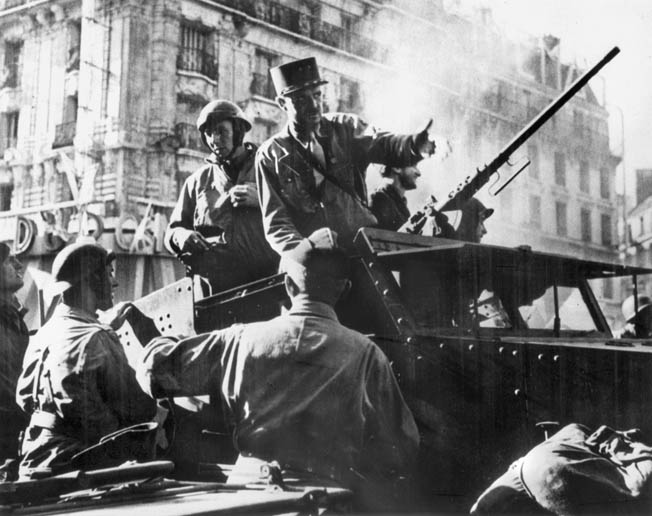
As a component of Maj. Gen. Wade H. Haislip’s U.S. XV Corps, the French 2nd Armored Division’s M-4 Sherman medium tanks, tank destroyers, and artillery pieces became heavily engaged for two furious weeks around Alencon and Argentan on the southern flank of the Falaise pocket. The division proved to be a skillful and flexible combat formation and was poised to link up with Canadian and Polish units at Chambois when it was switched eastward because of a change of mind on the part of General Omar N. Bradley, the cautious, hesitant commander of the U.S. Twelfth Army Group. The Free French division laagered in open country south of Argentan, and its leader chafed for more action.
The Orders to Liberate Paris
Early on the evening of August 22, Bradley transmitted an order to Leclerc from General Dwight D. Eisenhower, the Allied supreme commander, directing the 2nd Armored Division to attempt the liberation of Paris. Leclerc had been dreaming of this opportunity for some time. After initially shunning Paris as a military objective, Ike had agreed to it and believed that its liberation by a French unit would be appropriate.
By now attached to Maj. Gen. Leonard T. Gerow’s U.S. V Corps, the French tankers were to receive support from elements of Maj. Gen. Raymond O. “Tubby” Barton’s U.S. 4th Infantry Division, which had landed at Utah Beach on D-Day. Bradley, who viewed Leclerc as “a magnificent tank commander,” told him in his high-pitched Missouri twang, “I want you to remember one thing above all: I don’t want any fighting in Paris itself. It’s the only order I have for you. At no cost is there to be heavy fighting in Paris.” Bradley had recently witnessed the devastation in and around Saint Lo.
Leclerc was jubilant at the prospect of leading his armor into the capital, which had been under the Nazi heel for more than four years. De Gaulle, who had just established himself in the French president’s spacious, opulent country residence at Rambouillet, endorsed the order and planned to follow the division to Paris.
At first light on the morning of August 23, 1944, blue fumes filtered the clear air across the orchards south of Argentan as 16,000 men and their 2,000 throbbing Sherman tanks, tank destroyers, Stuart light tanks, half-tracks, field gun units, armored scout cars, and jeeps stood on the line of departure near the village of Ecouche. Painted proudly on the side hulls of the Shermans and tank destroyers were blue Crosses of Lorraine and the names of French cities, battles, and winds: Evreux, Lisieux, Cherbourg, Rennes, Romilly, Montmirail, Champaubert, Douaumont, Mort-Homme, Bourrasque, Astral, Ouragon, Sirocco…. Reclaiming the honor of France was the mission of Leclerc’s ironsides.
With the feisty little general riding point in a jeep, the division moved out at dawn in three columns along a front 17 miles wide, heading for the southwestern corner of Paris. The French armor thundered in a breakneck drive along narrow departmental roads through Sees, Mortagne, La Loup, and Maintenon. A lashing rainstorm could not dash the ardor of the Free French liberators.
“Take Whatever You’ve Got and Go!”
By mid afternoon on August 23, Leclerc reached Rambouillet, 28 miles southwest of Paris. There, he dashed into the chateau to pay his respects to General de Gaulle, who was killing time with English cigarettes and a volume of Molière discreetly borrowed from the chateau library. Confidently, the two warriors agreed to rendezvous two days later at the Gare Montparnasse in Paris.
Leclerc moved his division out again in three columns at dawn on Thursday, August 24, in a steady drizzle. Growing throngs of well wishers ran out on the roads and slowed the troops’ progress, and even the dour general was caught up in the excitement.
A few hours later, the 2nd Armored Division ran into the outer Paris defenses. The weather was wet and overcast, with no recourse to aerial support. At three locations, about 200 deadly German 88mm guns and concealed Tiger tanks opened up on Leclerc’s armor, causing severe losses. Several Shermans were set afire, and for four hours dismounted half-track crews stalked enemy antitank guns and 20mm cannons behind hedges and in orchards. “The firing seemed to go on all day,” reported one tank crewman. Leclerc was now having to fight his way into the city, and his confident prediction of an early arrival was in doubt. But he and his men were determined to get there at any cost.
At about 7:30 pm, while still 10 miles from Paris, Leclerc was met on the roadside by red-bearded Captain Raymond Dronne, the commander of a detachment of three Shermans and six half-tracks, who had been trying to locate a gap in the enemy defense lines. “I want you to go into Paris,” Leclerc ordered him. “Take whatever you’ve got and go! Forget about fighting the Germans. Tell them (the Parisians) to hold on; we’re coming tomorrow!”
Perched in the turret of a Sherman named Romilly, Dronne led his little force off, found a gap, and at 9:22 pm clanked to a halt outside the Hotel de Ville in the heart of Paris. Captain Dronne’s three tanks—named Romilly, Montmirail, and Champaubert for Napoleonic victories of 1814—stood within a few hundred yards of the Hotel Meurice, the occupation headquarters of General Dietrich von Choltitz, commandant of Paris.
Victory in Paris
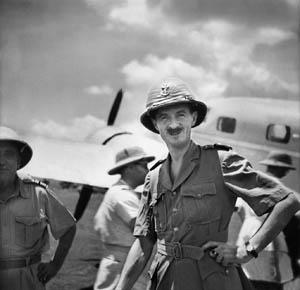
Then, between 8 and 10:30 on the historic morning of Friday, August 25, 1944, General Leclerc and his division rolled into the capital from the south and west, closely followed by troops of the U.S. 4th Infantry Division to the north. By 2 pm on that unforgettable day, German resistance had ended in the French capital. Swastika flags were hauled down from hotels and public buildings, and huge Tricolors hung from the Arc de Triomphe and the Eiffel Tower. Paris had never seen such a day of joyful pandemonium. People swarmed around the Allied vehicles, showering the weary, grimy soldiers with flowers, fruit, chocolate, and long-hoarded bottles of fine wine and champagne.
Riding alternately in an armored scout car and a command car, General Leclerc pushed through the teeming streets, first to the Gare Montparnasse, where he set up his divisional headquarters, and then to the Préfecture of Police. While lunching there with Resistance leaders, he was interrupted by a messenger with momentous news. After a sharp fight at the Hotel Meurice, General von Choltitz had been captured.
After being cursed and spat upon by indignant Parisians, the German general was hurried in a French half-track to the préfecture. In the police billiard room there, the pudgy von Choltitz—stiff, sweating in his dress uniform, and escorted by 20 gendarmes—was met by a more informal Leclerc, who wore a dirty khaki shirt, GI boots, and no decorations for the historic encounter. At 3:15 pm, the French officer formally accepted von Choltitz’s surrender in the name of the French government.
About an hour later, General de Gaulle rode into Paris in a black Hotchkiss convertible. Inching through cheering crowds, he went into the baggage room at the Gare Montparnasse to congratulate Leclerc and his staff and to read the text of von Choltitz’s surrender.
Roaring Ahead with Patton’s Third Army
After its momentous entry into the French capital, General Leclerc’s division refitted, rearmed, refueled, and headed eastward to Alsace and Lorraine with General Patton’s freewheeling Third Army while the British and Canadian armies were slugging it out against the bulk of the enemy panzer formations in Normandy. The Free French tankers were by now famous among the Allied forces for their dash and courage. Leclerc himself was highly respected by the Americans for his driving, no-nonsense style, while his men were feared by the enemy because they sometimes exacted revenge for the humiliation of 1940 by summarily shooting German soldiers they found along the way.
The 2nd Armored Division was attached to General Haislip’s XV Corps on September 29, 1944, and it then joined Lt. Gen. Alexander M. “Sandy” Patch’s U.S. Seventh Army in Alsace with the objective of the Rhine River. The going was slow and the fighting brutal, but by mid-November, the Seventh Army was poised on the eastern slopes of the rugged Vosges Mountains and struggling to break out onto the Alsace plain. General Leclerc was now close to fulfilling the pledge he had made at Kufra more than three years before—the liberation of Strasbourg.
The Capture of Strasbourg
On November 22, Generals Patch and Haislip ordered Leclerc to advance on Strasbourg. He needed no second bidding. At 7:30 the following morning, his tankers saddled up and moved out hastily across the storm-sodden Alsace plain. Brushing aside enemy roadblocks and pockets of resistance, four task forces of the 2nd Armored rolled toward Strasbourg. All eyes were on the lookout for the spires of the 12th century city’s great cathedral.
A U.S. Army liaison officer with the division reported, “We went roaring across the plain … We passed working parties and groups of German soldiers. They just stood open-mouthed. When they saw it was French troops, they were scared to death, for they had heard that the French did not take too many prisoners.”
Leclerc’s Shermans and tank destroyers encountered stiff opposition as they neared the city, but they smashed through the German strongpoints and barricades with ease. The enemy troops were taken by surprise as Leclerc’s armor barreled into Strasbourg and thundered along the old cobbled streets. German officers shopping with their wives were stunned to see American-built tanks bearing French insignias, and townspeople fell to their knees, weeping and uttering prayers of thanksgiving.
The swift seizure of Strasbourg startled General Jacob L. “Jake” Devers, able commander of the Sixth Army Group, and other American generals. “It was the most fantastic surprise I ever heard of in the whole war,” declared Haislip. “The French swept into Strasbourg, going like the wind. The Germans had no idea the French 2nd Armored Division was within 50 miles of them.” One of Leclerc’s columns pushed on to the cathedral, and the Tricolor was hoisted from one of its graceful spires. The Free French were now on the Rhine.
Taking the Eagle’s Nest
After the Strasbourg triumph, Leclerc’s division was assigned to the French First Army, whose commander, General Jean-Marie Lattre de Tassigny, wanted to consolidate French forces in northwest Europe. But Leclerc still mistrusted the French military establishment after the disaster of 1940, and the two officers clashed over a strategy for reducing the Colmar pocket. At his own request, Leclerc’s division was transferred to the U.S. Seventh Army, joined General Frank W. Milburn’s XXI Corps, and played a prominent role in the U.S. drive southward through Colmar early in February 1945. Leclerc had grown accustomed to serving alongside the Americans.
After crossing the Rhine, the 2nd Armored Division had the distinction of helping to capture Adolf Hitler’s Eagle’s Nest retreat at Berchtesgaden, high in the Bavarian Alps, on May 4, 1945. General Leclerc had little time to savor his proud division’s accomplishments in the European theater.
Negotiations in Vietnam
A month later, he was named commander in chief of French forces in the Far East and ordered to raise an expeditionary force to fight the Japanese. He left France on August 18, 1945, and signed on behalf of his country the Japanese instrument of surrender aboard the battleship USS Missouri in Tokyo Bay on September 2.
Arriving in Saigon the following month, Leclerc became embroiled in negotiations between the French and the communist regime in North Vietnam. A preliminary accord was reached in March 1946 with communist leader Ho Chi Minh, whom Leclerc met in Hanoi. But French differences in political approaches and disapproval back home of his anti-insurgency tactics caused Leclerc to request relief from his command. He left Saigon in July 1946.
Leclerc’s Last Mission
Promoted to full general, Leclerc became the inspector of land troops in French North Africa. But the situation worsened in Indochina, and in December 1946, Leclerc undertook another mission there to help arrange a political settlement. He was asked the following February to return to Indochina as high commissioner, but he felt that he was too isolated politically to be effective. He returned to North Africa.
After flying in bad weather on a mission from Oran to Colomb-Bechar, a commune in northwestern Algeria, on November 28, 1947, General Leclerc’s plane crashed when it hit a rock upon landing. He was killed, less than a week past his 45th birthday.
The warrior who had skillfully and bravely fought on two continents under the Cross of Lorraine was made a marshal of France on August 23, 1952.
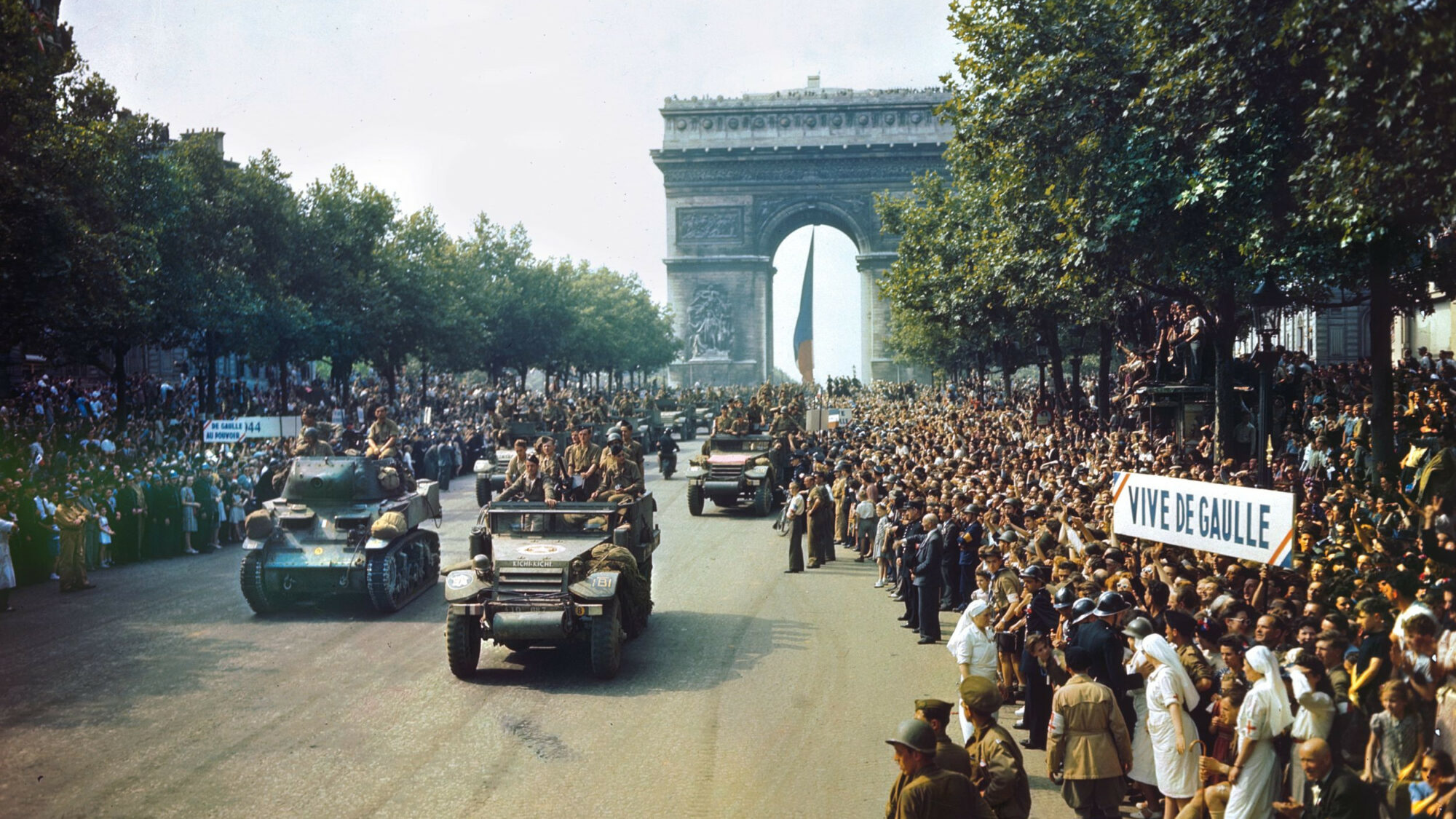
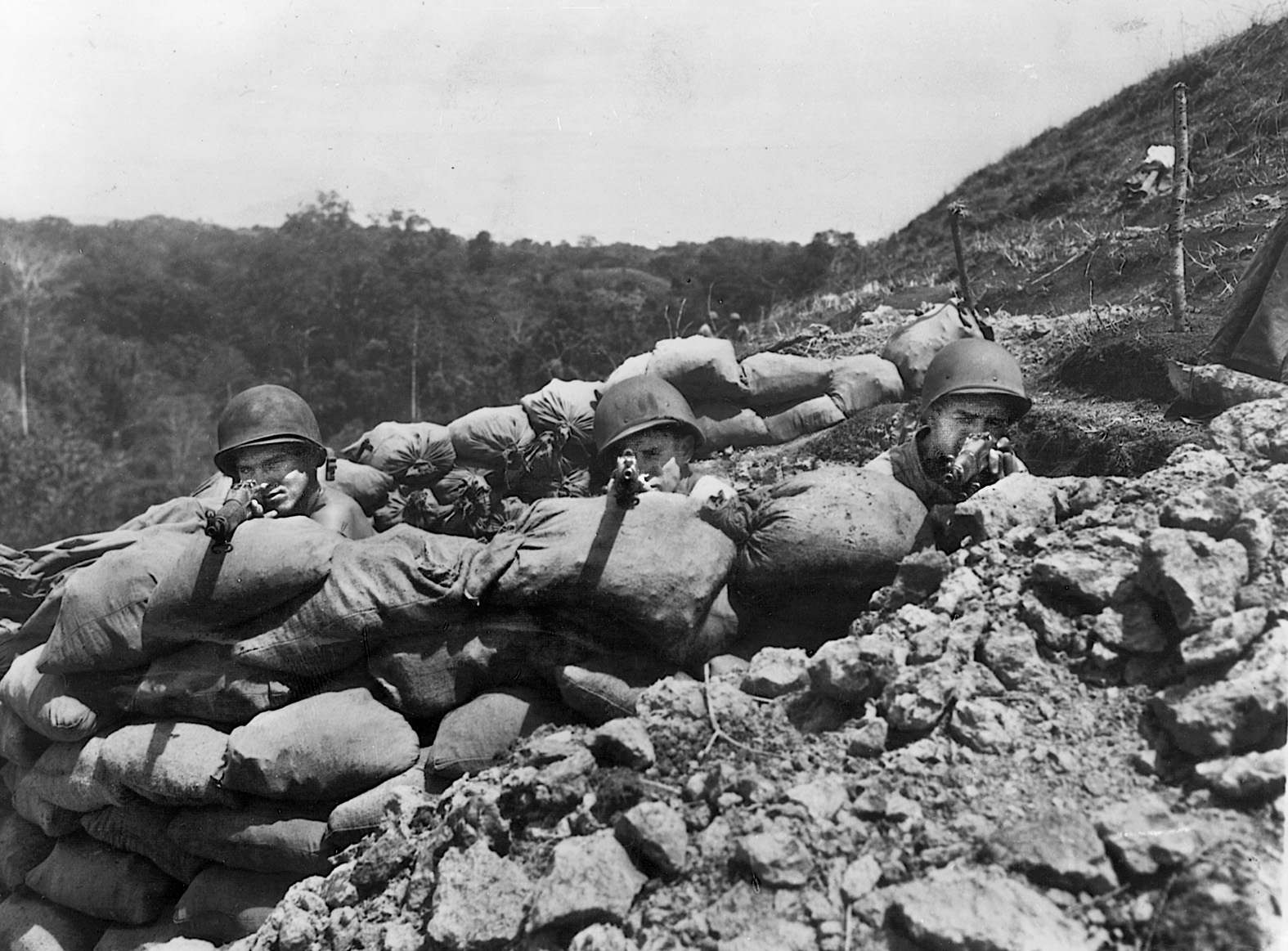
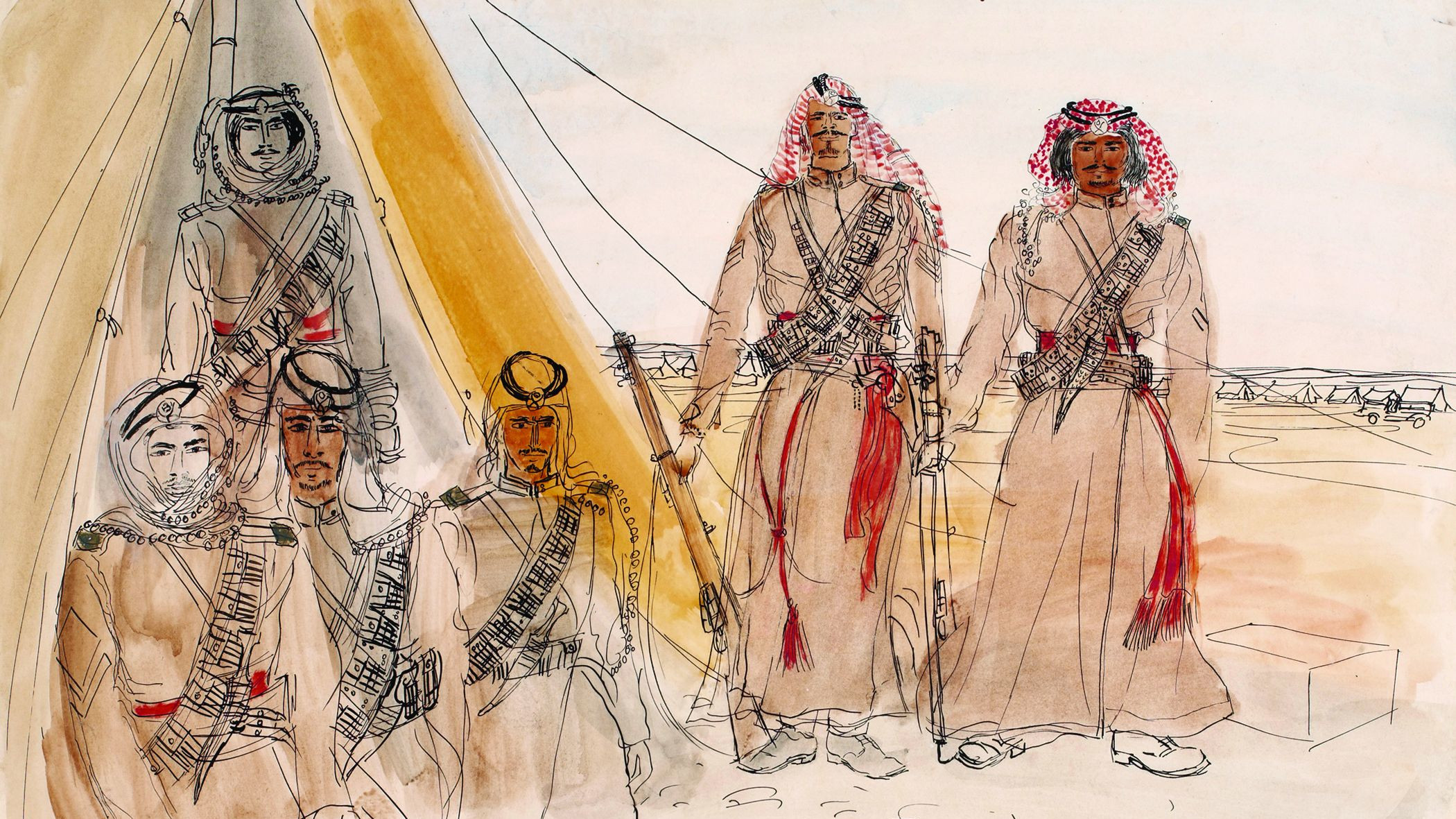
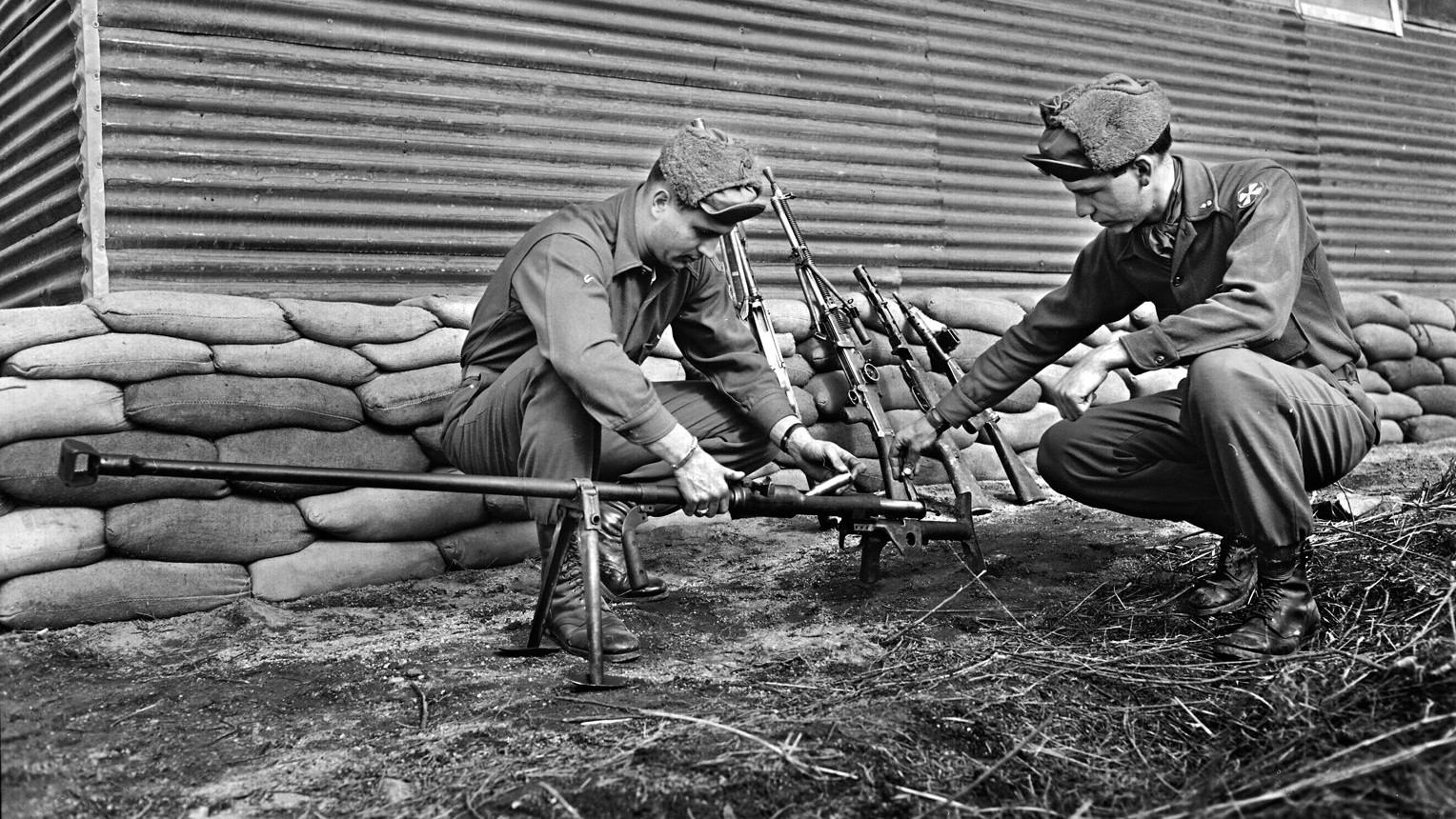
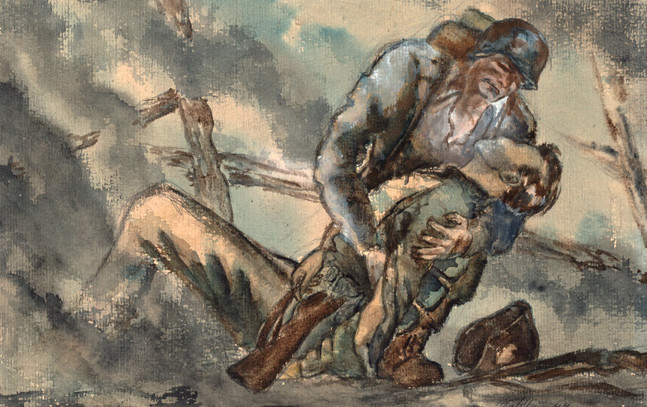
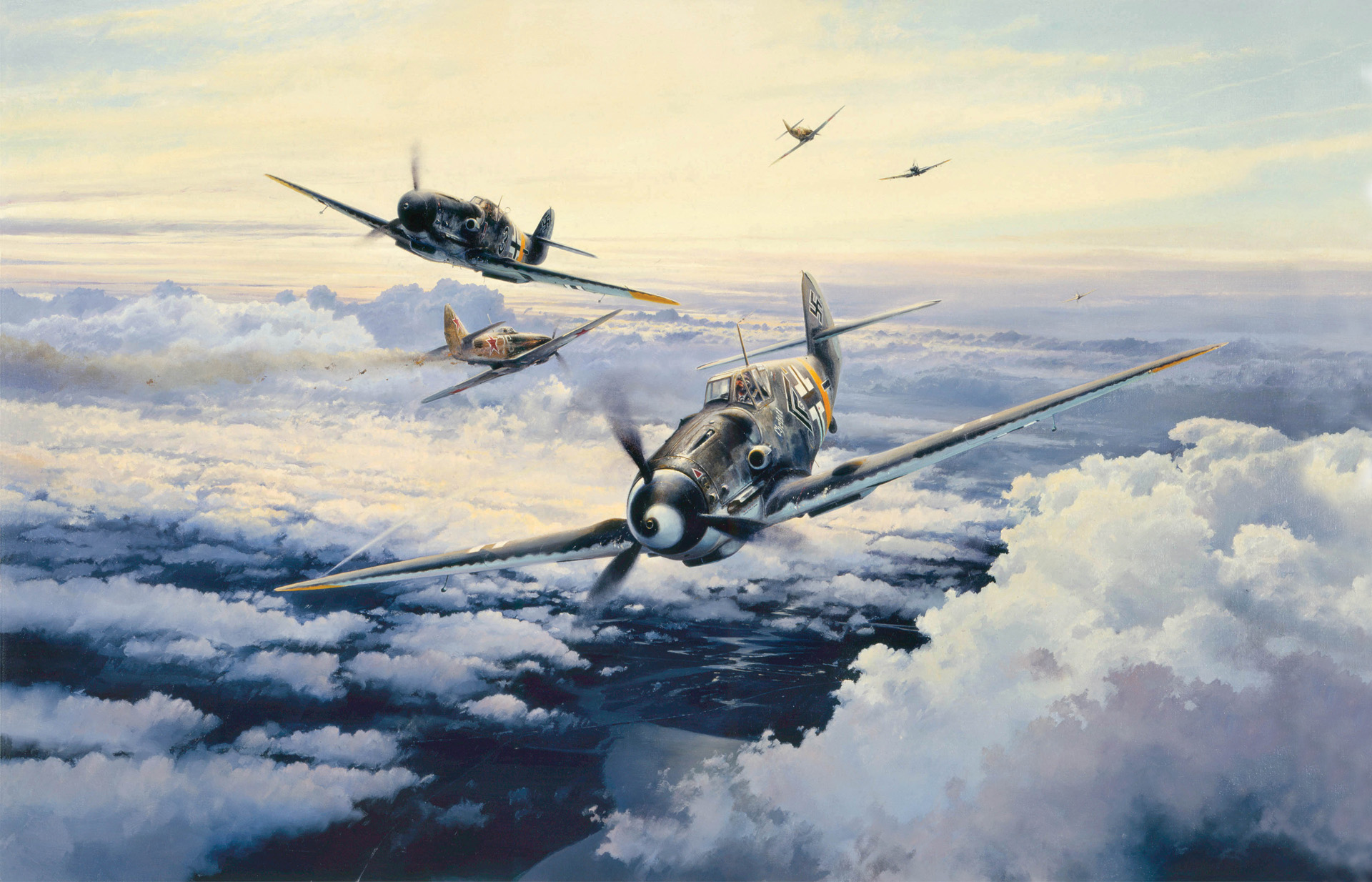
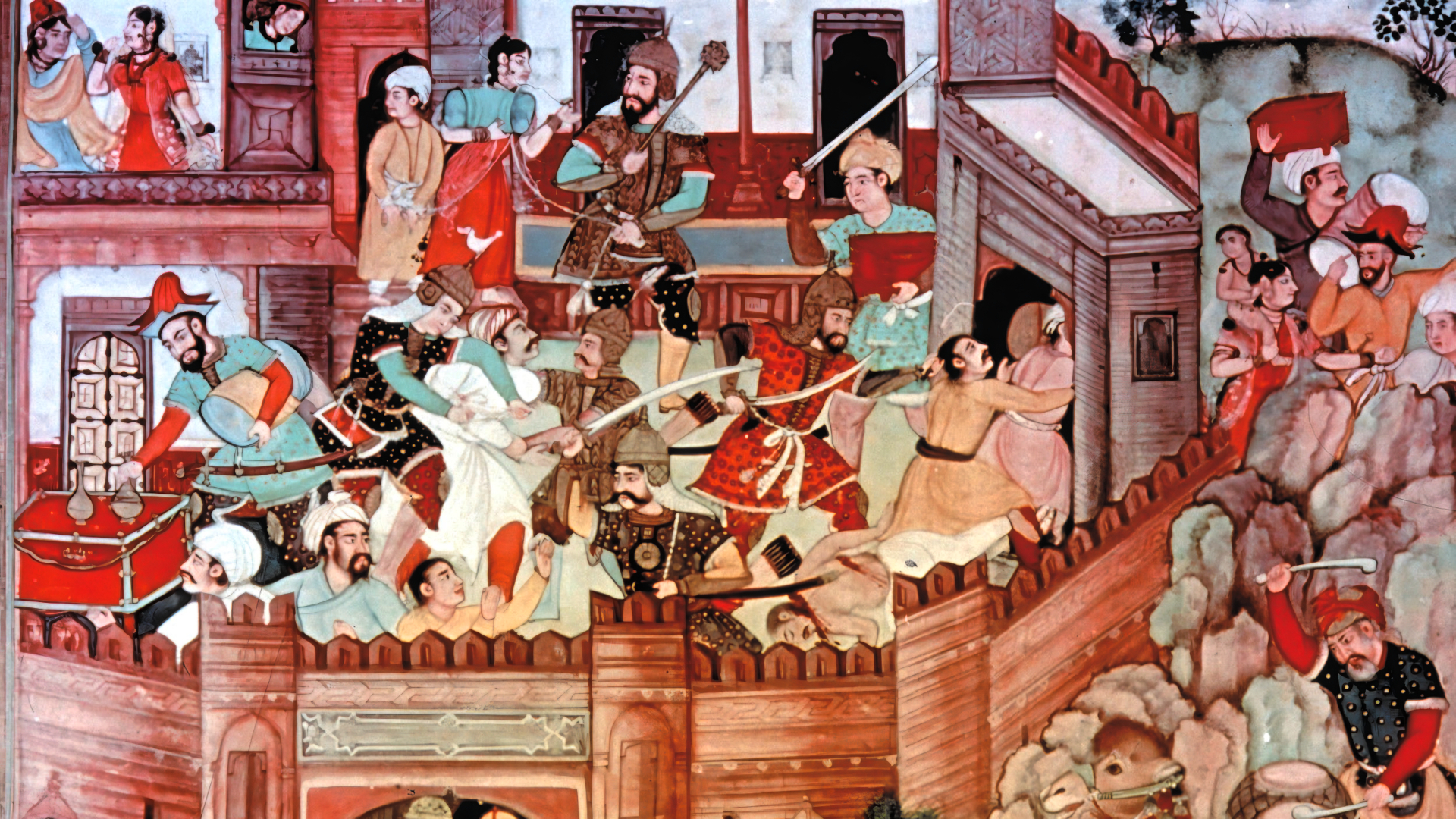

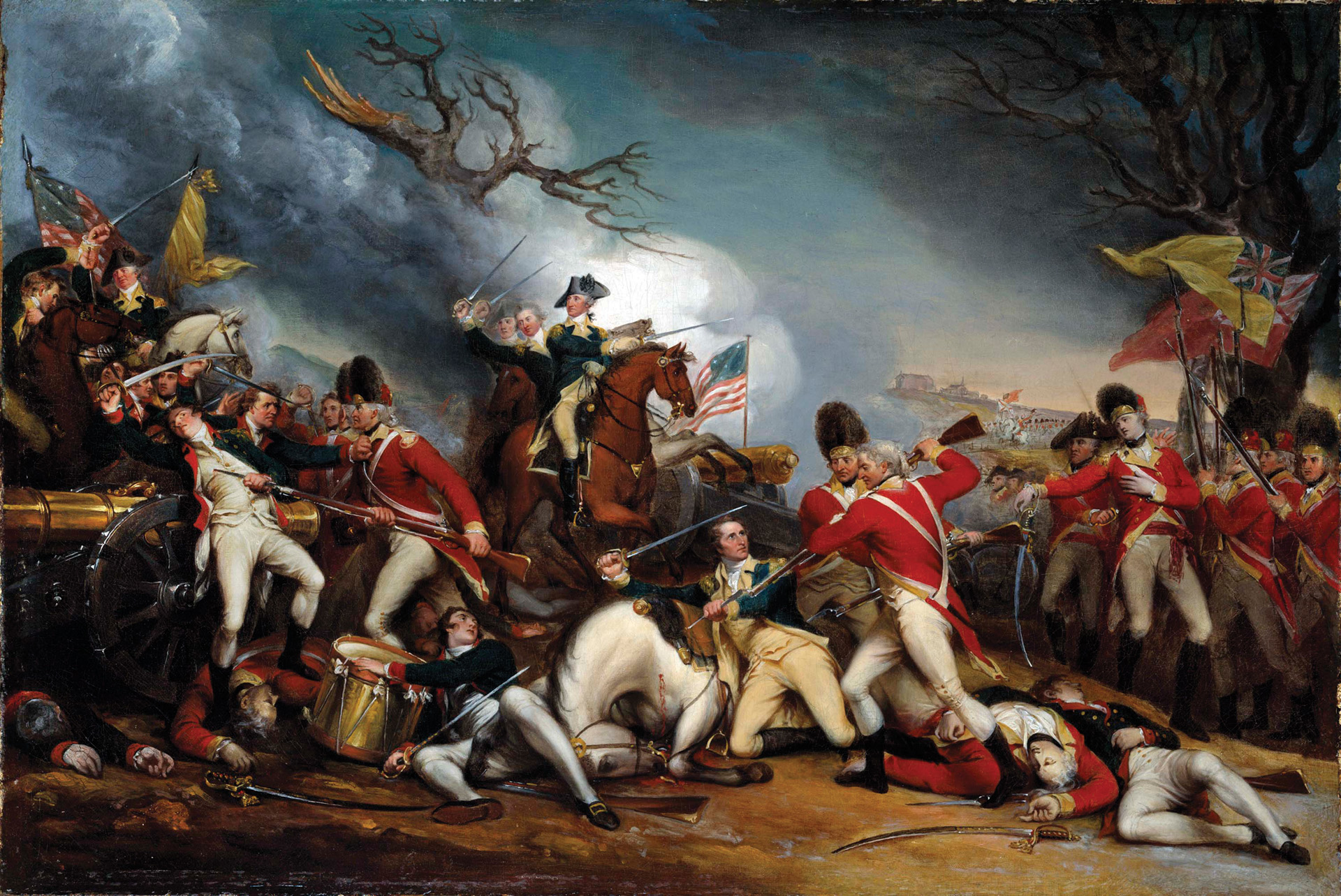
Many years ago, in the French city of Alencon, I came across a monument to General LeClerc’s relief of the city in 1944. I am delighted to learn more about this outstanding soldier. He fully deserves his high reputation.